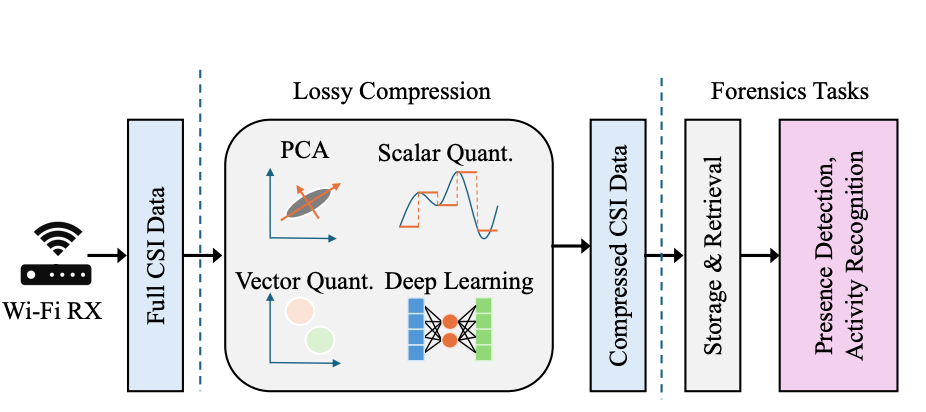Abstract
Wi-Fi sensing is an emerging technology that uses channel state information (CSI) from ambient Wi-Fi signals to monitor human activity without the need for dedicated sensors. Wi-Fi sensing does not only represent a pivotal technology in intelligent Internet of Things (IoT) systems, but it can also provide valuable insights in forensic investigations. However, the high dimensionality of CSI data presents major challenges for storage, transmission, and processing in resource-constrained IoT environments. In this paper, we investigate the impact of lossy compression on the accuracy of Wi-Fi sensing, evaluating both traditional techniques and a deep learning-based approach. Our results reveal that simple, interpretable techniques based on principal component analysis can significantly reduce the CSI data volume while preserving classification performance, making them highly suitable for lightweight IoT forensic scenarios. On the other hand, deep learning models exhibit higher potential in complex applications like activity recognition (achieving compression ratios up to 16000:1 with minimal impact on sensing performance) but require careful tuning and greater computational resources. By considering two different sensing applications, this work demonstrates the feasibility of integrating lossy compression schemes into Wi-Fi sensing pipelines to make intelligent IoT systems more efficient and improve the storage requirements in forensic applications.

